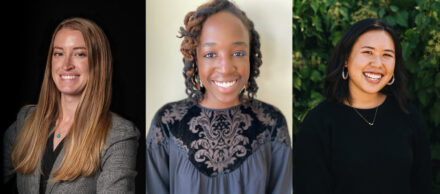
A view of the Mediterranean from my airplane window
With today’s planes and high-speed trains, you can crisscross the Mediterranean in a matter of hours. Starting the day in Barcelona, you can easily be in Alexandria, Rome, Istanbul, Algiers, or Palermo for lunch.
But what about in the medieval period, the days of traders and crusaders? Covering the same area in the Middle Ages was a matter of days or weeks rather than hours. Before the technology of the compass reached Europe, a trip around the Mediterranean meant venturing from port city to port city trying to keep land in sight and relying on islands to break up long distances across the sea. Imagine the mixture of languages, dress, goods, and food you would have encountered in these port cities in medieval times. Did you look for others from your native land, or did you exchange with peoples whose ethnicity, religion, and manners were vastly different from your own?
These questions percolated through recent discussions at the seminar National Narratives and the Medieval Mediterranean, supported by the Getty Foundation’s Connecting Art Histories initiative.

Seminar participants at the American Academy in Rome. Photo: Anne Helmreich
This project brings together younger scholars from around the Mediterranean Basin to investigate and reflect upon their national narratives of the medieval Mediterranean when set in a broader geographic and historical context. I had a chance to join them for their recent meeting at the American Academy in Rome, which has been hosting the project for the past two years, under the direction of Kim Bowes (director of the American Academy of Rome) and Bill Tronzo (professor at the University of California, San Diego). Kim is an archaeologist and Bill is an art historian; their interests reflect the interdisciplinary nature of the project, which unites archaeology and art history.
The different perspectives and insights generated by bringing together archaeologists, art historians, and historians were invigorating. But what was truly exciting was realizing that these younger scholars, who all come from a region historically riven by political, ethnic, and religious strife, were now joined together in a collective sense of inquiry and truly embraced this collaborative endeavor….even when it meant getting up a 5am to catch a bus to Tuscany to visit medieval ruins in the Archeomineral Park of San Silvestro and the collections of the Museum of the Castle and Medieval Ceramics!

Left: Members of the American Academy in Rome research team at the San Silvestro Archeomineral Park. Right: A display from the nearby Museum of the Castle and of Medieval Ceramics. Photos: Anne Helmreich
When naps might have been in order, instead the participants eagerly exchanged ideas. When the bus was pulled over by the police, we were amused by the potential prospect of submitting our passports. What would the police officer make of our collection of Albanian, Croatian, Cypriote, Egyptian, Greek, German, Italian, Israeli, Spanish, Tunisian, Turkish, and U.S. passports? It turns out that the police officer was far more interested in the speed of the bus than in our nationalities.
The American Academy in Rome was the perfect host for this project; it is premised on an atmosphere of intellectual conviviality. The seminar participants mixed with the American Academy in Rome fellows over lunches and dinner, and they also presented their work in progress in a public symposium.

Program for the National Narratives public symposium
Each scholar is working on a case study about how the formation of modern nation states have affected the preservation and interpretation of the medieval past. Who decided what should be preserved of the medieval past? How should it be preserved? How has this past been interpreted or displayed? What do the material remains left to us today tell us about the medieval past?
These questions revealed that the labels and categories generally used to describe this past do not always comfortably fit the objects and monuments studied by the scholars. For example, scholar Ruggero Longo revealed the cultural complexity of the Royal Palace and Palantine Chapel in Palermo, Sicily, which has been variously described as Romanesque (to affiliate it with the West), or Byzantine (to link it with the East), Sicilian medieval, Sicilian Norman (in recognition of the Normans who conquered the territory from the Arab rulers), or Arab-Norman. His talk and many of the others asked how we understand concepts of East and West, and whether these are even useful distinctions, and also encouraged thoughtful consideration of the interactions between Islam, Judaism, and Christianity.

Norman Stanza, Royal Palace, Palermo, Sicily. Photo: Bill Tronzo
The group’s discussions also unraveled traditional narratives of decline or progress used to describe the Middle Ages in different parts of the Mediterranean. For example, Moheddine Chaouali described how archaeological finds at Bulla Regia in Tunis (perhaps best known for its Roman mosaics) indicate that rather than falling into decline around the fourth century, as traditionally thought, the town underwent a new form of urban planning that emphasized artisan shops. The medieval Mediterranean described by these scholars was dynamic and complex, and deeply interconnected through networks of trade and other forms of affiliation. Objects and monuments were revealed to be shrouded in layers of meaning that must be carefully peeled away and examined.
Studying the medieval past suddenly felt like putting together a complex puzzle that needs a team to assemble—finding the corner pieces, deciding which are the edge pieces, and then working together to form the picture in the middle. I felt caught up in the excitement as the pieces began to fall into place. I look forward to the publication that will result from this project, and to learning more about the ongoing collaborations that I am sure will result.




Comments on this post are now closed.